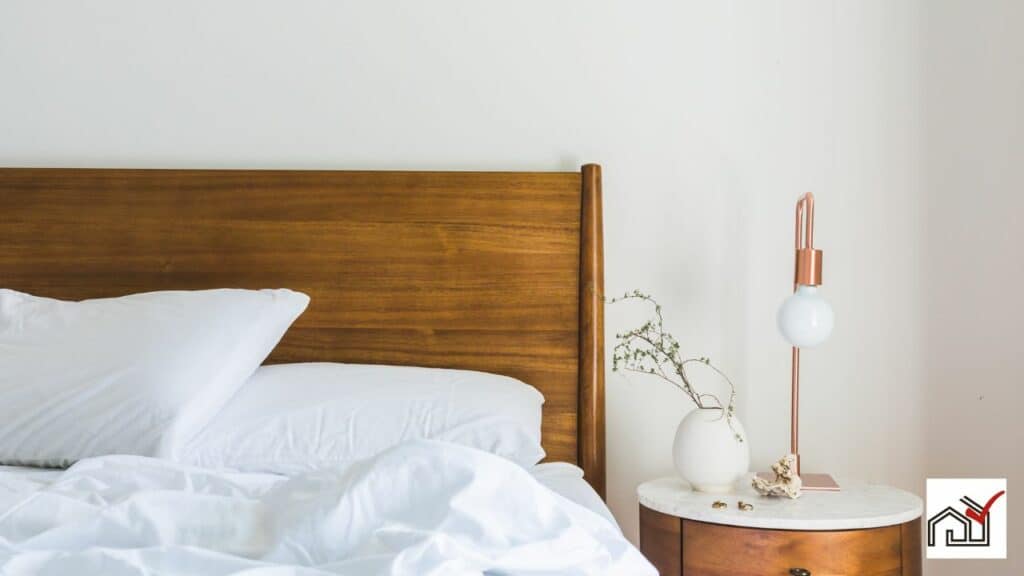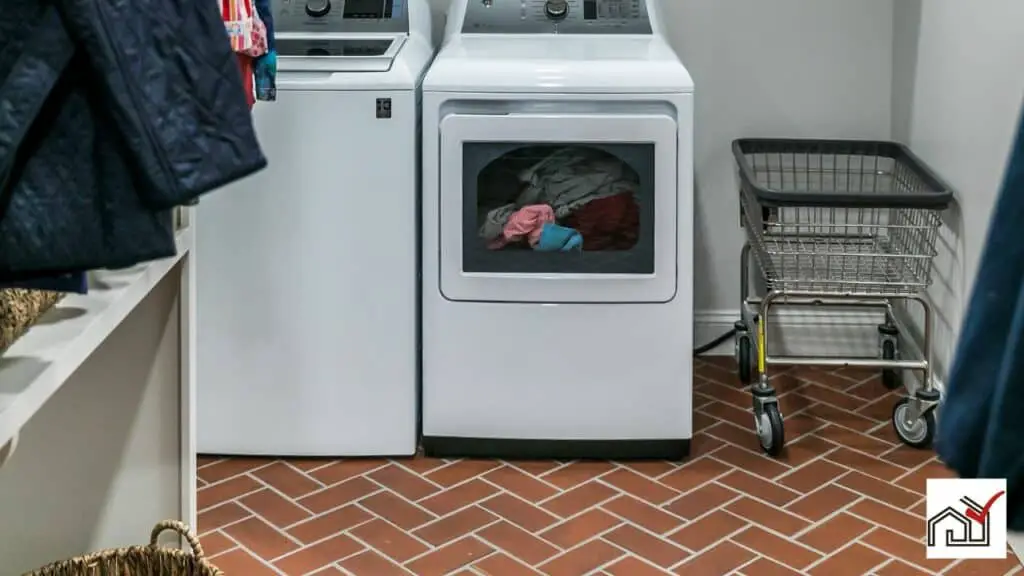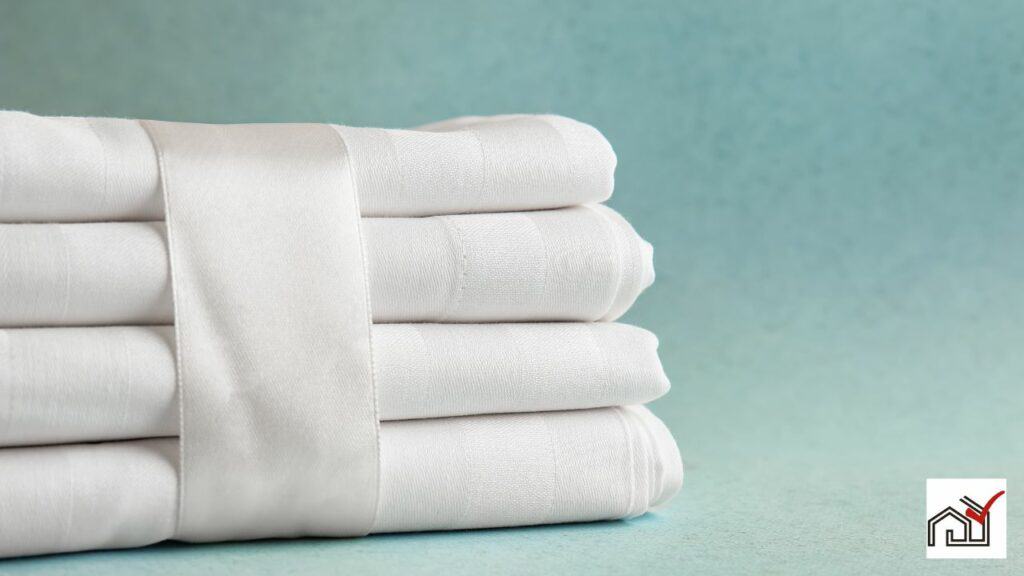Spot cleaning a pillow helps remove stains without washing the whole pillow.
First, check the pillow's fabric and stain type.
Use the right cleaner and gentle motions to avoid damage.
After cleaning, let the pillow dry completely to avoid moisture problems.
This helps keep pillows clean and in good condition.
Assessing the Stain
To clean a pillow stain, begin by examining its size, type, and location, and note any color or odor. This helps determine the appropriate cleaning method.
Start by blotting the stain with a white towel to absorb moisture. Do not rub, as this can worsen the stain. If the care label allows, apply a cleaning solution suitable for the fabric and stain type to avoid damage.
Next, use a clean, damp sponge to dab the stain gently, aiming to lift it from the fabric without soaking the pillow. Avoid vigorous scrubbing to protect the fibers. Blot with a clean section of the towel to remove the solution and the stain. Repeat as necessary, always using a clean towel section.
Preliminary Pillow Care
Before cleaning spots on a pillow, it is important to vacuum the surface to remove any loose dirt and dust. Use the vacuum's upholstery attachment to do this gently. This step is crucial to keep the pillow clean and free of dust mites, particularly for pillows without protective covers.
Regular vacuuming of your pillow is advised, along with washing throw pillow covers every two weeks to eliminate dust and allergens. When washing pillows with decorative elements, handle them carefully to avoid damage.
Always check the care label before cleaning to ensure you use the correct methods for the pillow's material. In case of spills, promptly dab the area with a white cloth to absorb the liquid without rubbing it in.
This preliminary care prepares the pillow for any additional spot cleaning that might be needed, helping to extend its life and maintain its appearance.
Choosing the Right Cleaner
Choose a cleaner suitable for the pillow's fabric to maintain its condition. For common materials like cotton and polyester blends, mild upholstery cleaners work well for spot cleaning without soaking the interior. Apply the cleaner and blot with a dry towel.
For delicate fabrics such as silk or satin, use a cleaner made specifically for these materials to avoid damage. If unsure about the fabric, use the mildest solution available. A homemade cleaner of rubbing alcohol and white vinegar is a gentle alternative and leaves a clean scent.
For spot cleaning, a mixture of warm water and a teaspoon of dish soap can be effective. Apply to the stain and blot with a towel. For tougher stains like red wine or ink, start with club soda, then use upholstery cleaner and rubbing alcohol.
Before using any cleaner, test it on a small hidden part of the pillow to ensure it doesn't harm the fabric. Once safe, use it to keep the pillow in good condition.
Spot Cleaning Technique
To effectively spot clean a pillow, apply a cleaning solution to the stain using a white cloth to prevent color transfer. Address spills and stains quickly by blotting with a clean white towel, avoiding rubbing which can worsen the stain.
For a DIY cleaning solution, mix white vinegar with water. Test this on a small, hidden area of the pillow to check for any adverse reactions. If safe, treat the stain with the vinegar mixture by blotting gently without soaking the pillow.
For tougher stains like ink, rubbing alcohol may be effective. Use a white cloth dampened with alcohol to dab the stain. Then rinse with a damp cloth using cool water and let the pillow air-dry. Avoid hot water to prevent setting the stain.
After cleaning, use a clean towel to remove any remaining moisture to inhibit mildew growth and keep the pillow fresh. Spot cleaning this way can prolong the pillow's usability and appearance.
Treating Different Stains
Different stains on pillows require specific cleaning methods.
For dust, vacuum the pillow with an upholstery attachment.
For liquid spills on decorative pillows, blot with a white towel to avoid color transfer and prevent the stain from spreading.
To remove sticky substances like gum, chill with ice in a bag until it hardens, then scrape off. For remaining residue, use a mild soap or upholstery shampoo for spot cleaning.
Pen marks can be tough; start by blotting with a white towel. If necessary, use rubbing alcohol on a clean towel to dab the stain.
For red wine, club soda and salt may help. For ink or other persistent stains, try upholstery cleaner, or use rubbing alcohol and dish soap for spot cleaning, using minimal water to avoid soaking the filling.
These methods should effectively clean most stains from throw pillows.
Pillow Drying Methods
To dry a pillow after spot cleaning, follow these guidelines:
For synthetic and feather pillows that are machine dryable, use a low heat tumble dry setting. Add dryer balls or clean tennis balls to help maintain the pillow's shape and promote even drying.
Do not machine dry foam pillows. Instead, air dry them in an area with good airflow, out of direct sunlight to prevent foam degradation. Periodically flip the pillow for uniform drying.
For pillows unsuitable for the dryer or those requiring gentle care, air dry by hanging in a ventilated space. If the pillow is hand washed, press out water without twisting the fabric.
Ensure the pillow is fully dry before reuse to avoid mold or odor.
Maintenance Tips
Maintain your pillow's condition by vacuuming it with an upholstery brush to remove dust and allergens. This is important for frequently used living room throw pillows. Vacuuming maintains cleanliness and aesthetic appeal.
Act quickly on spills by blotting with a white towel to prevent stains. Before using any cleaner, test a small hidden area to avoid damage, especially important for new or special fabric pillows.
For sticky residues, place a bag of ice on the spot until it hardens, then scrape it off gently. Remove pen marks by dabbing with rubbing alcohol and cool water. Always let the pillow dry completely after cleaning.
Regular pillow maintenance ensures they stay clean and attractive, prolonging their use and contributing to a welcoming living space.
Professional Cleaning Options
Several professional cleaning services are available for pillows that need special care or have tough stains. These services are especially important for pillows made of delicate materials like silk or satin, or for those that can't be machine washed. Professional cleaning can help maintain the quality and longevity of these pillows.
Decorative pillows with complex designs and fragile fabrics are often cleaned best by dry cleaning, which protects the details and fabric. Professional upholstery cleaners can effectively remove difficult stains without harming the pillow's structure.
For pillows with removable covers that can be machine washed, it's recommended to use a gentle cycle with cold water to reduce damage. If you're uncertain about the fabric's durability or the proper cleaning method, a professional cleaner can offer advice to prevent damage.
Pillow protectors can also be professionally cleaned to maintain their effectiveness against dust, sweat, and oil.
Using professional cleaning services is beneficial for keeping pillows in good condition, preserving the quality of your bedding, and ensuring a clean sleeping area free of allergens.




